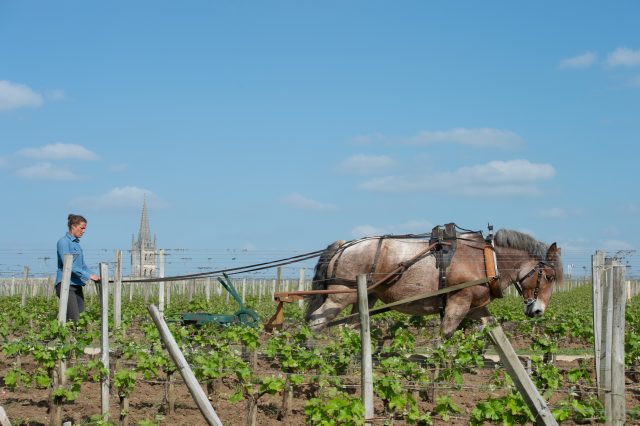How does tillage affect vineyard soil bacteria?
Soil health has become one of the hot topics in viticulture, with it being a key aspect of regenerative agriculture. Groundbreaking research is now shedding further light on how different approaches to vineyard management affect it.

The study, titled Changes in the taxonomic composition of soil bacterial communities under different inter-row tillage managements in a sloping vineyard of the Balaton Uplands (Hungary), was published in Springer Link earlier this week. It was authored by Balázs Zoltán Besze, Andrea K. Borsodi, Melinda Megyes, Tibor Zsigmond, and Ágota Horel.
They noted that bacterial communities in the soil play crucial roles in the functions of Vitis vinifera vines: “Soil bacterial communities can facilitate many plant processes, for instance, hormone secretion, solubilisation of iron or phosphorus, Nitrogen fixation, and alert plant immune system.”
Another study, from 2019, even suggested that soil surface bacteria can play a role in starting the production of rotundones, the chemical compounds that give Syrah and Grüner Veltliner their distinct “peppery” aroma.
In order to further their understanding of how vineyard management practices affect these crucial microbial communities, the researchers took soil samples from the aforementioned sloping Hungarian vineyard in July and October 2020. The key variable was that one section of the vineyard had been tilled (that is to say the soil had been deliberately agitated/overturned), and one had not. Tillage has been performed in vineyards for centuries, and before it was tractors pulling the ploughs, horses were used – a sight that can still be seen in some more picturesque vineyards today.
The research team then used “next generation” 16S rRNA gene-based amplicon sequencing to determine the diversity of the bacterial communities in each sample. A total of 1,983,467 bacterial sequences were drawn from 36 soil samples, and from these 41 bacterial phyla or phylum-level taxonomic units were identified.
Partner Content
“Both the tilled and no-tilled soil samples were dominated by sequences assigned to phyla Pseudomonadota, Acidobacteriota, Bacteroidota, Verrucomicrobiota, Actinobacteriota, and Gemmatimonadota,” the researchers concluded. “The results showed that tillage had no significant effect compared to the no-tilled samples in the studied area. Water runoff and seasonally changed soil physical and chemical properties affected mainly the bacterial community structures.”
The study posed the idea that cover cropping, a technique employed in many vineyards for a number of reasons, including water retention, could play a role: “Accelerated erosion due to conventional tillage has affected the diversity of soil bacterial communities through increased accumulation in the depositional zones of slopes. Although accumulation also occurred in no-tillage sites, the rate was slower, and the amount was smaller due to the cover vegetation. In this way, the use of cover crops can help to reduce soil loss between vines, thereby also reducing microbial diversity.”
Related reading:
Is organic certification worth the hassle?
A green revolution in Argentina
Related news
Can beer be turned into useful fats and medicines?
Mosquitos like to bite beer drinkers who recently had sex
Advances in AI brewing led by rising demand for 'specialty beer'




